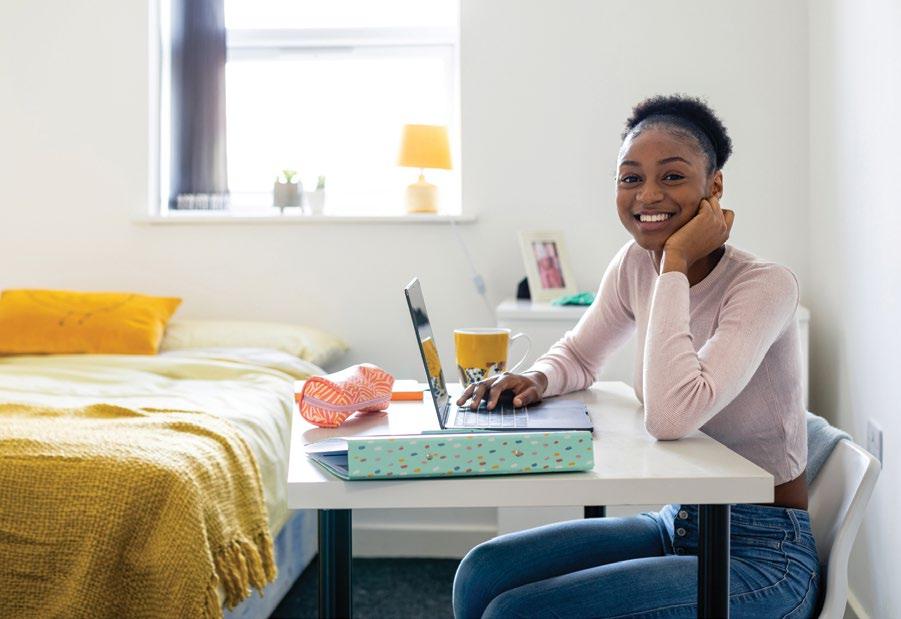
5 minute read
Hidden income
Hidden income
Is your house earning its keep?
Former Reserve Bank governor Philip Lowe copped a lot of flak when he suggested earlier this year that the solution to housing affordability was to get a flatmate.
For those who missed it, Dr Lowe faced a grilling in parliament about Australia’s soaring housing costs and said it came down to supply and demand.
“We need more people on average to live in each dwelling,” he said. While it’s unlikely we’ll see Mr Lowe advertising his spare room on flatmates.com.au anytime soon, it’s not bad advice.
Taking in a tenant seems like a neat solution to the twin problems of rising mortgage repayments and an unprecedented rental squeeze. Put simply, people need somewhere to live and lots of homeowners could do with extra cash.
And it doesn’t need to be a long-term commitment, with some economists predicting rates should start to fall again this time next year. So why not think about getting your home to work a bit harder in the meantime?
RENT OUT A ROOM
Do you have a spare room that could be earning income? Giving up your home office to take in a tenant could generate $200-300 a week in rent. Over a year, that’s more than $10,000 – enough to cover additional repayments and a holiday (if you need time away from that new housemate.)
Flatmates.com.au, one of the country’s largest house-sharing platforms, reported June was its busiest month since 2020. The site logged 50,000 new members, with listings up 55 per cent on the same time last year and 30 per cent more people seeking accommodation.
If you’re worried about diving in over your head, you could dip your toe in the water first by hosting a short-stay overseas student. Universities and language schools are always looking for host families, with organisations such as the Australian Homestay Network helping co-ordinate placements and vetting students and hosts.
Rooms are so scarce on the Queensland’s Gold Coast that the local council recently backed a Host for the Coast campaign to encourage locals to open their doors to overseas students. It can be a great way to make lasting international connections, with room rentals starting at a minimum of one month.
Pros: You can make a significant second income. On top of that, you might make some new friends. There’s also the feelgood factor that you’re helping ease the rental crisis.
Cons: It’s not always easy sharing personal space with someone you’ve just met. And you’ll need to invest considerable time in screening applicants. There are also tax implications. You’ll need to declare rental income and your home may be subject to proportional capital gains tax when you sell. On the flipside, you may be able to claim some maintenance costs. Do your research and seek professional advice.
DON’T LIKE PEOPLE? HOW ABOUT BOXES?
Renting out space in your home doesn’t mean you need to roll the dice on a random tenant.
If you have a spare room, garage, carport or storage cage, you can rent that out too.
A growing number of peer-to-peer online platforms are helping connect people who have storage with people who need it around Australia. Some of the more popular sites include Spacer, Spaceout and Store at my House. Users can make around $100-$200 a month, although this is generally higher if your space is located in a valuable CBD location.
Spacer host Elliot listed his inner-Sydney car parking space and now earns $270 a month. In another example on the company’s website, single parent Lisa rents the storage cage at her apartment in Sydney’s Neutral Bay for $130 a month and uses the cash to cover extra-curricular activities for her children.
Pros: It’s passive income with little intrusion on personal space. You won’t need to do much beyond an initial listing and correspondence. It is usually free to list space.
Cons: Hosts would need some reassurance about what people are storing and how often they would need access. Unit owners may need to consider any body corporate issues.
PUT IN A GRANNY FLAT
The market for granny flats is booming as state governments make it easier for Australians to build and rent out freestanding units in their backyards.
Queensland became the latest state to legalise leasing granny flats last year, in response to the rental crisis. As of July, South Australia and Victoria remain the only states where these secondary dwellings can’t be rented on the open market.
For those who can take advantage of flexible new rules (some councils waive development approval), putting in a self-contained granny flat can cost around $70,000. Consider DIY kits and portable pods.
Pros: You can earn rental income without the inconvenience of having someone share your space and amenities. Having dual living options can add value to your home.
Cons: There are substantial upfront costs, and you’ll need to investigate your local planning laws carefully. As with renting a room, there are income and capital gains tax implications, but also potential deductions.



